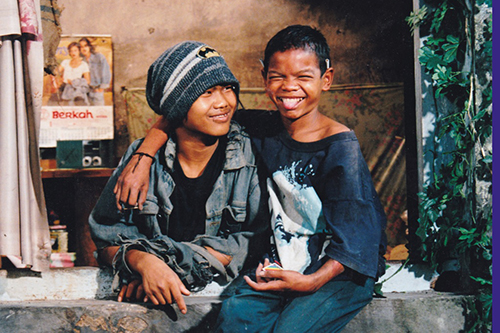Leaf on a Pillow [OmeU] ID, 1998, R: Garin Nugroho, mit Christine Hakim, 78 Min
FOR ENGLISH SCROLL DOWN
Der Film wurde 1998 im Programm „Un Certain Regard“ der Filmfestspiele von Cannes gezeigt und erhielt zahlreiche Auszeichnungen, unter anderem beim Tokyo International Film Festival und dem Asia-Pacific Film Festival. Auch wenn Daun di Atas Bantal als indonesischer Beitrag für den Oscar eingereicht wurde, kam es nicht zu einer Nominierung. Die internationale Resonanz war dennoch stark: Kritiker lobten die poetische Kraft des Films ebenso wie seine kompromisslose Darstellung sozialer Missstände.
Daun di Atas Bantal gilt heute als Schlüsselwerk des indonesischen Kinos nach dem Ende der Suharto-Ära und als Meilenstein in der filmischen Auseinandersetzung mit Armut, Kindheit und gesellschaftlicher Verantwortung.
Der indonesische Film Daun di Atas Bantal (1998), international bekannt als Leaf on a Pillow, ist eines der bedeutendsten Werke des Regisseurs Garin Nugroho.
Der Film erzählt in eindringlich realistischen Bildern vom harten Leben dreier Straßenkinder in Yogyakarta: Sugeng, Heru und Kancil schlagen sich mit Gelegenheitsarbeiten, Betteln und kleinen Betrügereien durch. Ihre einzige Bezugsperson ist Asih, gespielt von der renommierten Schauspielerin und Produzentin Christine Hakim, bei der sie gelegentlich Unterschlupf finden. Die titelgebende Metapher – ein Blatt auf einem Kissen – steht für die Zerbrechlichkeit und Orientierungslosigkeit dieser Kinder in einer rauen, gleichgültigen Welt.
Bemerkenswert an Daun di Atas Bantal ist die Verschmelzung von dokumentarischem Stil und erzählerischer Dichte. Nugroho arbeitete mit Straßenkindern, was dem Film eine außergewöhnliche Authentizität verleiht. Die Tonspur war zudem eine technische Premiere: Es war der erste indonesische Film, der im Dolby-Digital-Format vertont wurde. Aufgrund der schwierigen politischen Lage in jener Zeit wurde ein Teil der Postproduktion in Australien abgeschlossen.
ENGL.
The film was shown in 1998 in the ‘Un Certain Regard’ programme at the Cannes Film Festival and received numerous awards, including at the Tokyo International Film Festival and the Asia-Pacific Film Festival. Although Daun di Atas Bantal was submitted as Indonesia's entry for the Oscars, it did not receive a nomination. Nevertheless, the international response was strong: critics praised the film's poetic power as well as its uncompromising portrayal of social injustices.
Daun di Atas Bantal is now considered a key work of Indonesian cinema after the end of the Suharto era and a milestone in the cinematic exploration of poverty, childhood and social responsibility.
The Indonesian film Daun di Atas Bantal (1998), known internationally as Leaf on a Pillow, is one of director Garin Nugroho's most significant works.
The film uses vividly realistic images to tell the story of the harsh lives of three street children in Yogyakarta: Sugeng, Heru and Kancil get by doing odd jobs, begging and petty scams. Their only point of reference is Asih, played by renowned actress and producer Christine Hakim, who occasionally takes them in. The metaphor in the title – a leaf on a pillow – represents the fragility and disorientation of these children in a harsh, indifferent world.
What is remarkable about Daun di Atas Bantal is the fusion of documentary style and narrative density. Nugroho worked with street children, which gives the film an extraordinary authenticity. The soundtrack was also a technical first: it was the first Indonesian film to be recorded in Dolby Digital format. Due to the difficult political situation at the time, part of the post-production was completed in Australia.
